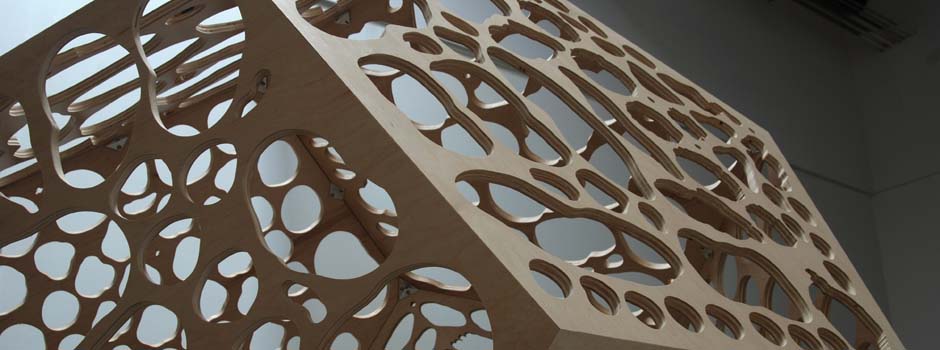
The Third Line at Independent Art Fair
Feb 13, 2012 Exhibition

The second edition of THE INDEPENDENT, the exhibition forum devised by and for gallerists, will take place at the former DIA Center for the Arts located at 548 W 22nd Street from March 8-11, 2012 during New York Art Fair Week. “We are pleased to be participating in New York’s ever active art scene. This will be the gallery’s first endeavour here, followed by Frieze New York in May, where we hope to be just as successful in establishing the concept and strength of contemporary art and artists from the Middle East,†says gallery Director Laila Binbrek. “This is a new chapter in The Third Line’s repertoire, and we aim to continue promoting this standard of programming and art in New York.â€
The layout of the exhibition is customized to reflect the spatial and curatorial concerns of over 40 international participants, who are presenting solo and group exhibitions as well as shared collaborative presentations. INDEPENDENT strives to re-examine traditional art fair models and methods of presentation in response to the changing attitudes and growing challenges for artists, galleries, nonprofits, curators and collectors, and focuses on the experience of viewing and interacting with contemporary art in a group context.
The Third Line presents work by artists Hayv Kahraman, Laleh Khorramian, Monir Shahroudy Farmanfarmaian and Slavs and Tatars, showcasing a diverse selection of contemporary Middle Eastern art to the New York audience.
Kahraman tackles the deconstruction of space through her habitual theme of the body. She delves into the separation of borders and the creation of boundaries, which occur in exterior or physical locations but also subjectively within the internal body space. Kahraman employs the realm of “corporeal space†by creating a carto-graphical map of her body to discuss issues of borders and diaspora across the physical and metaphysical landscape through new works composed of ink, hair and map pins.
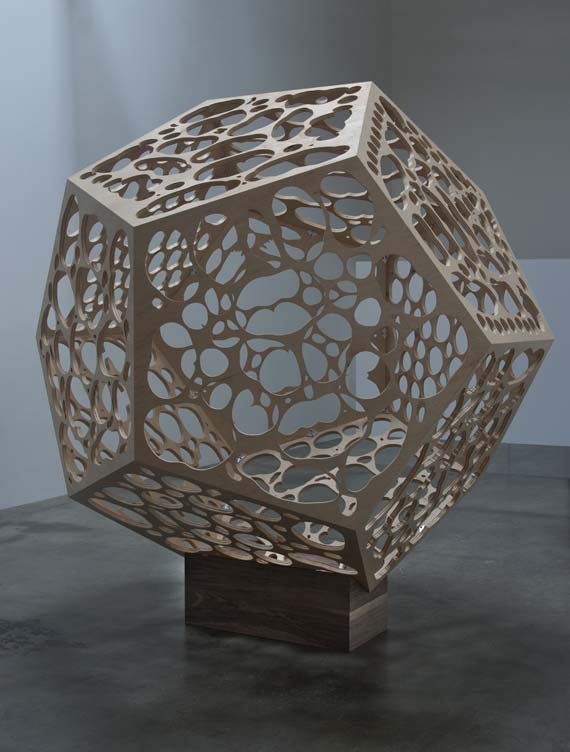 Hayv Kahraman / Quasi-Corporeal, 2012, Maple and walnut wood with aluminum, 220.98x203.2x203.2cm / Image: courtesy of The Third Line and The Artist
Hayv Kahraman / Quasi-Corporeal, 2012, Maple and walnut wood with aluminum, 220.98x203.2x203.2cm / Image: courtesy of The Third Line and The Artist
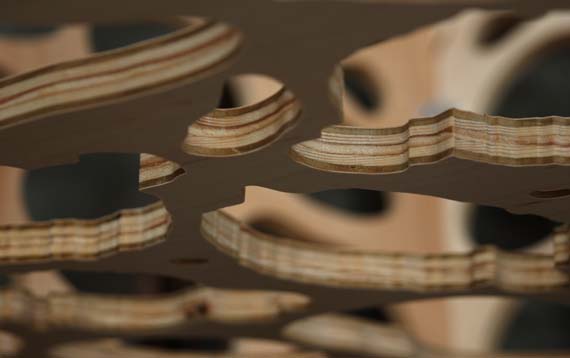 (Also Image above) Hayv Kahraman / Quasi-Corporeal, 2012, Maple and walnut wood with aluminum, 220.98x203.2x203.2cm (detail) / Image: courtesy of The Third Line and The Artist
(Also Image above) Hayv Kahraman / Quasi-Corporeal, 2012, Maple and walnut wood with aluminum, 220.98x203.2x203.2cm (detail) / Image: courtesy of The Third Line and The Artist
Presenting mono-prints and drawings in a variety of media including oil, crayon, collage, pen and ink, Khorramian’s works describe the end result of art more than the process itself. The monotypes, with very minimal brushstrokes maintain a graphic and detailed effect demonstrating notions of torture and procession.
_2008_Ink,spraypaint,collage_on_paper_30.5x30_.5cm_.jpg) Laleh Khorramian / OLNS (10), 2008, Ink, spraypaint, collage on paper, 30.5x30.5cm / Image: courtesy of The Third Line and The Artist
Laleh Khorramian / OLNS (10), 2008, Ink, spraypaint, collage on paper, 30.5x30.5cm / Image: courtesy of The Third Line and The Artist
_2008_Ink,spraypaint,collage_on_paper_30.5x30_.5cm_.jpg) Laleh Khorramian / OLNS (17), 2008, Ink, spraypaint, collage on paper, 30.5x30.5cm / Image: courtesy of The Third Line and The Artist
Laleh Khorramian / OLNS (17), 2008, Ink, spraypaint, collage on paper, 30.5x30.5cm / Image: courtesy of The Third Line and The Artist
Farmanfarmaian’s exploration over the last forty years of working with mirror mosaics, reverse glass painting and Islamic geometry has seen her perfect an individualized technique. Her latest series, aptly titled the Convertibles, sees ornate works elevate the interplay of Islamic geometry, repetition, pattern and form to another level, by creating formations that can physically be arranged in multiple variations.
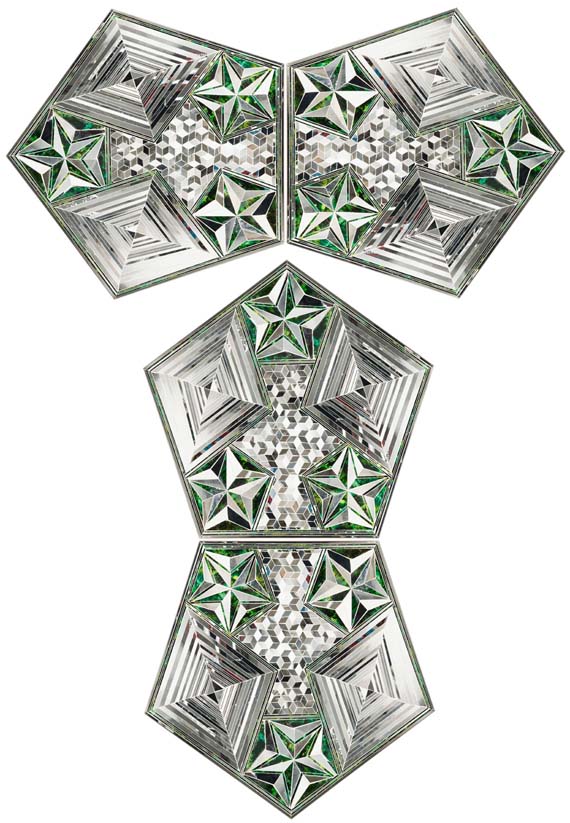 Monir Shahroudy Farmanfarmaian / Convertible Series, G4-V2, 2010, Mirror and reverse glass painting on plaster and wood, Variable size / Image: courtesy of The Third Line and The Artist
Monir Shahroudy Farmanfarmaian / Convertible Series, G4-V2, 2010, Mirror and reverse glass painting on plaster and wood, Variable size / Image: courtesy of The Third Line and The Artist
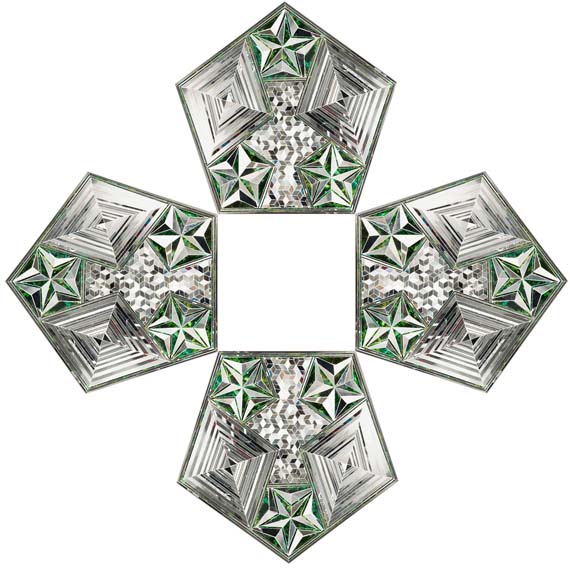 Monir Shahroudy Farmanfarmaian / Convertible Series, G4-V4, 2010, Mirror and reverse glass painting on plaster and wood. Variable size / Image: courtesy of The Third Line and The Artist
Monir Shahroudy Farmanfarmaian / Convertible Series, G4-V4, 2010, Mirror and reverse glass painting on plaster and wood. Variable size / Image: courtesy of The Third Line and The Artist
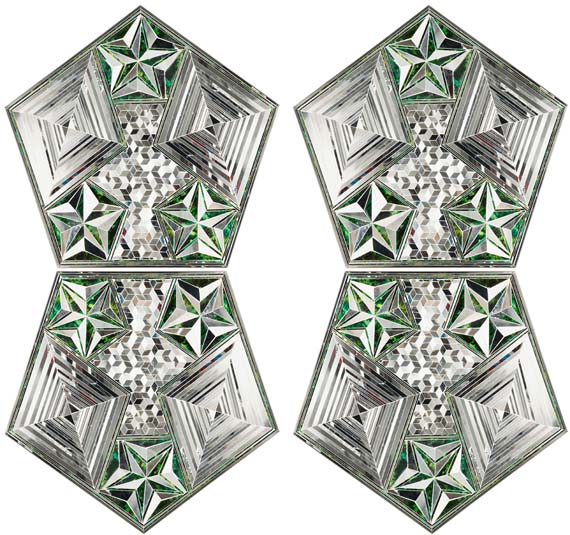 Monir Shahroudy Farmanfarmaian / Convertible Series, G4-V6, 2010, Mirror and reverse glass painting on plaster and wood. Variable size / Image: courtesy of The Third Line and The Artist
Monir Shahroudy Farmanfarmaian / Convertible Series, G4-V6, 2010, Mirror and reverse glass painting on plaster and wood. Variable size / Image: courtesy of The Third Line and The Artist
Artist collective Slavs and Tatars’ work spans several media, disciplines and a broad spectrum of cultural registers that focus on an oft-forgotten sphere of influence between Slavs, Caucasians and Central Asians. The collective excavates stories and legacies, which are at risk of being forgotten and trodden under the guise of progress and westernization through cynicism and clever visuals.
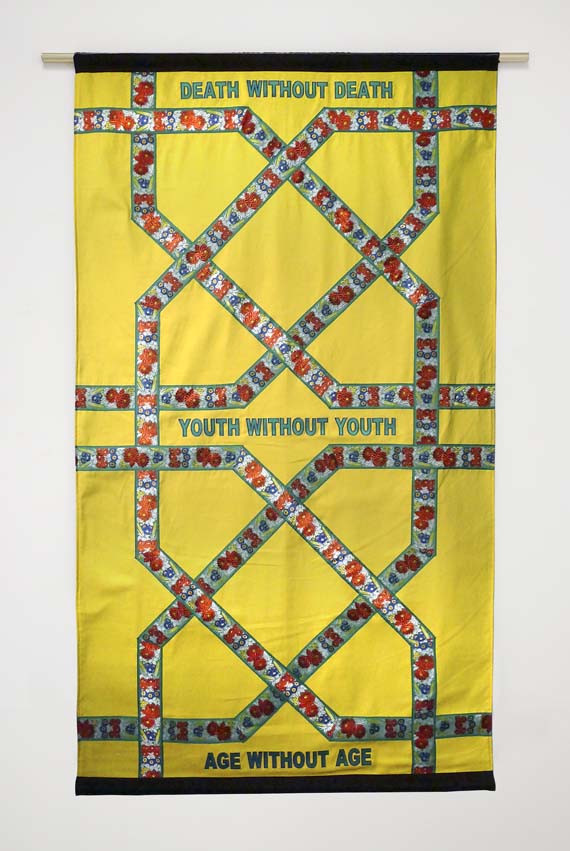 Slavs and Tatars / Death Without Death (From the Friendship of Nations Series) 2011, Textile on fabric, 200x120 cm / Image: courtesy of The Third Line and The Artist
Slavs and Tatars / Death Without Death (From the Friendship of Nations Series) 2011, Textile on fabric, 200x120 cm / Image: courtesy of The Third Line and The Artist
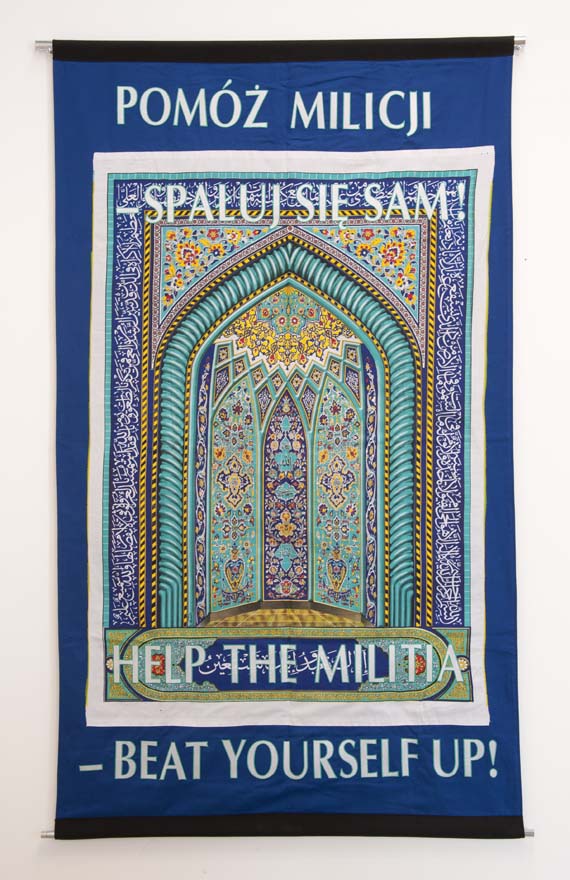 Slavs and Tatars / Help the Militia (From the Friendship of Nations Series), 2011, Textile on fabric, 200x120 cm / Image: courtesy of The Third Line and The Artist
Slavs and Tatars / Help the Militia (From the Friendship of Nations Series), 2011, Textile on fabric, 200x120 cm / Image: courtesy of The Third Line and The Artist
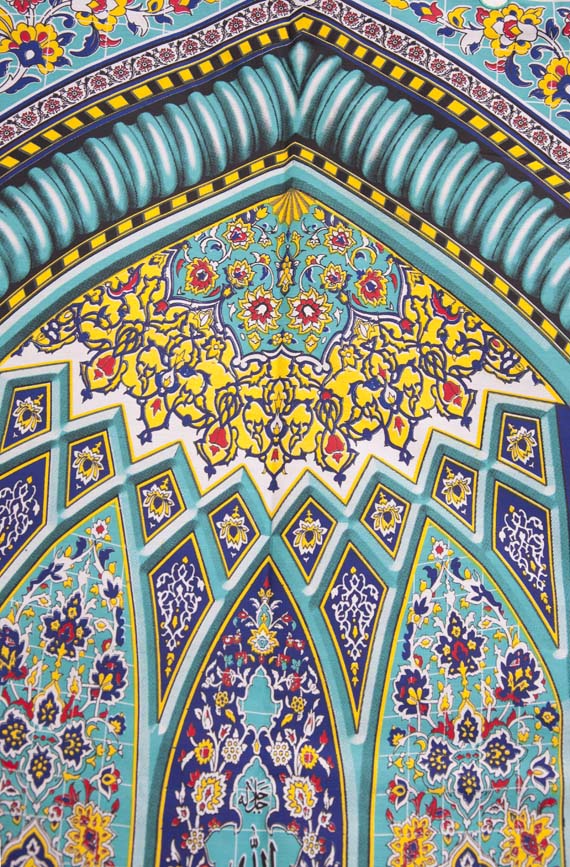 Slavs and Tatars / Help the Militia (From the Friendship of Nations Series), 2011, Textile on fabric, 200x120 cm (detail) / Image: courtesy of The Third Line and The Artist
Slavs and Tatars / Help the Militia (From the Friendship of Nations Series), 2011, Textile on fabric, 200x120 cm (detail) / Image: courtesy of The Third Line and The Artist
The Third Line is an art gallery that represents contemporary Middle Eastern artists locally, regionally and internationally, with a gallery space in Dubai. In addition to on-going exhibitions, The Third Line hosts non-profit, alternative programs to increase interest and debate in the region. The Third Line also publishes books by associated artists from the region. Books published to date include Presence by Emirati photographer Lamya Gargash (2008), and In Absentia by Palestinian-Kuwaiti Tarek Al-Ghoussein (2009), and most recently Cosmic Geometry, an extensive monograph on Monir Shahroudy Farmanfarmaian, edited by Hans Ulrich Obrist and Karen Marta (2011). Represented artists include: Abbas Akhavan, Ala Ebtekar, Amir H. Fallah, Babak Golkar, Ebtisam Abdulaziz, Farhad Moshiri, Fouad Elkoury, Golnaz Fathi, Hassan Hajjaj, Hayv Kahraman, Huda Lutfi, Joana Hadjithomas & Khalil Joreige, Lamya Gargash, Laleh Khorramian, Monir Shahroudy Farmanfarmaian, Pouran Jinchi, Rana Begum, Sherin Guirgius, Shirin Aliabadi, Slavs and Tatars, Susan Hefuna, Tarek Al- Ghoussein and Youssef Nabil.
Comments
Add a comment